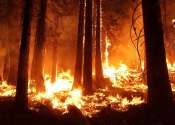Uncovering the dominant contribution of intermediate volatility compounds to biomass-burning organic aerosols
Biomass burning, including wildfires and residential heating, emits a variety of air pollutants and has a series of negative impacts on the environment.









